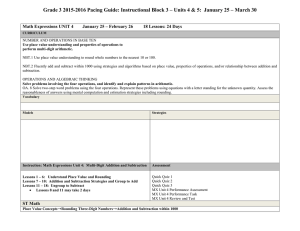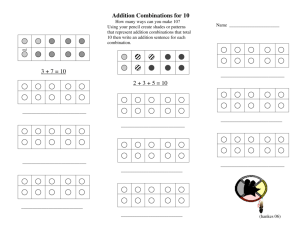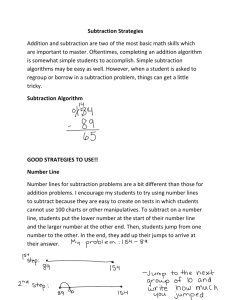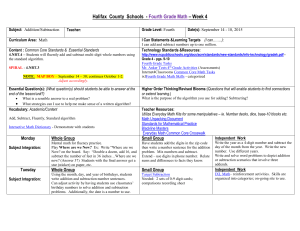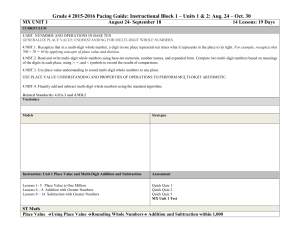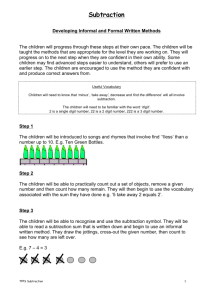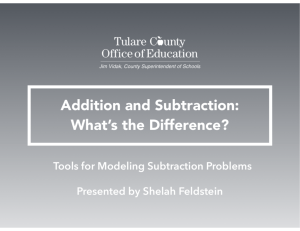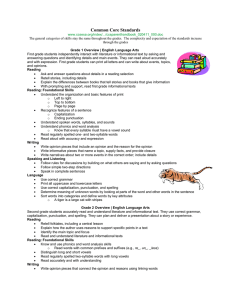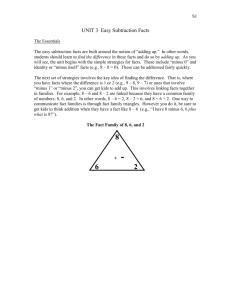Fourth and Fifth Grade Strategies* – Addition and Subtraction
advertisement
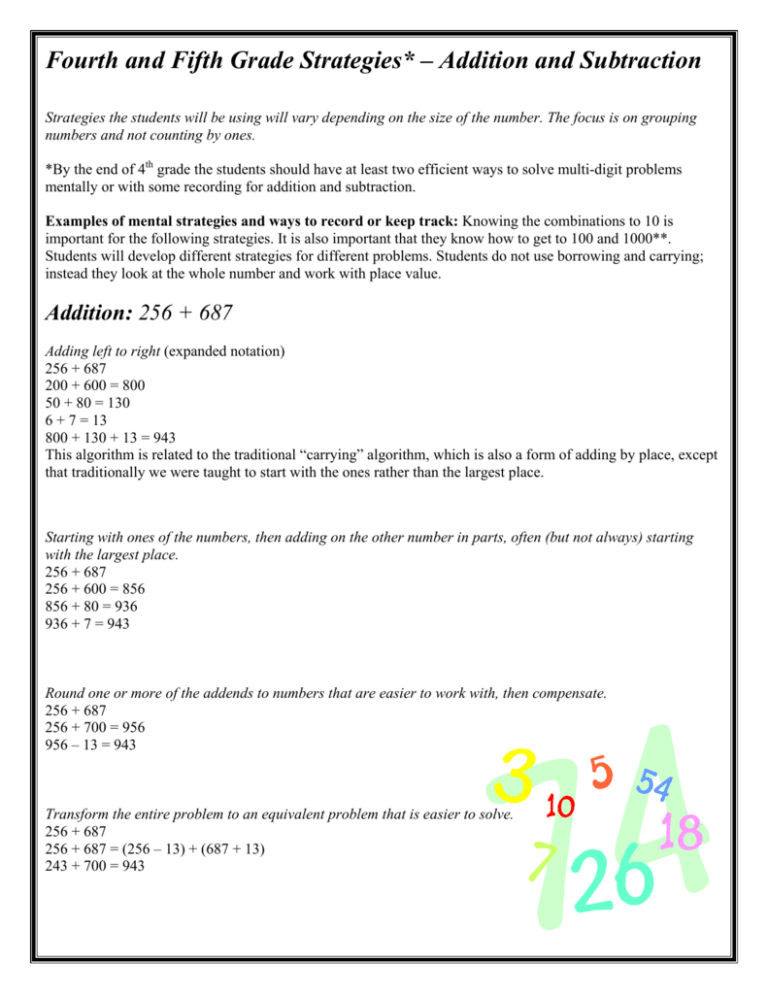
Fourth and Fifth Grade Strategies* – Addition and Subtraction Strategies the students will be using will vary depending on the size of the number. The focus is on grouping numbers and not counting by ones. *By the end of 4th grade the students should have at least two efficient ways to solve multi-digit problems mentally or with some recording for addition and subtraction. Examples of mental strategies and ways to record or keep track: Knowing the combinations to 10 is important for the following strategies. It is also important that they know how to get to 100 and 1000**. Students will develop different strategies for different problems. Students do not use borrowing and carrying; instead they look at the whole number and work with place value. Addition: 256 + 687 Adding left to right (expanded notation) 256 + 687 200 + 600 = 800 50 + 80 = 130 6 + 7 = 13 800 + 130 + 13 = 943 This algorithm is related to the traditional “carrying” algorithm, which is also a form of adding by place, except that traditionally we were taught to start with the ones rather than the largest place. Starting with ones of the numbers, then adding on the other number in parts, often (but not always) starting with the largest place. 256 + 687 256 + 600 = 856 856 + 80 = 936 936 + 7 = 943 Round one or more of the addends to numbers that are easier to work with, then compensate. 256 + 687 256 + 700 = 956 956 – 13 = 943 Transform the entire problem to an equivalent problem that is easier to solve. 256 + 687 256 + 687 = (256 – 13) + (687 + 13) 243 + 700 = 943 Subtraction: 465 – 129 Subtract one number in parts from the other. 465 – 100 = 365 OR 465 – 125 = 340 365 – 20 = 345 340 – 4 = 336 345 – 5 = 340 340 – 4 = 336 Change one number, then compensate for the change. 465 – 130 = 335 OR 460 – 129 = 331 335 + 1 = 336 331 + 5 = 336 Add up from the number being subtracted. 129 + 1 = 130 OR 129 + 300 = 429 130 + 300 = 430 429 + 1 = 430 430 + 35 = 465 430 + 35 = 465 1 + 300 + 35 = 336 300 + 1 + 35 = 336 Transform the entire problem to an equivalent problem that is easier to solve. 465 – 129 = 466 – 130 (adding 1 to both numbers) 466 – 130 = 336 Subtract each column and record each difference, whether it is positive or negative. 400 – 100 = 300 60 – 20 = 40 5 – 9 = -4 300 + 40 – 4 = 336 **Students should be able to break 100 into 90 + 10 and 1000 into 900 + 90 + 10. This helps them compute to the nearest 100 and 1000 quickly and efficiently knowing the ones should add to 10 and the tens should add to 90. For example 47 to 100 needs a 50 and a 3. Then the child would add on the amount above the hundred. Playing the Close to 100 and Close to 1000 games are key to developing this skill. Fourth and Fifth Grade Computation Expectations: Efficient strategies for combinations to 100 and 1000; students should have at least two efficient strategies for solving multi-digit addition and subtraction problems.


